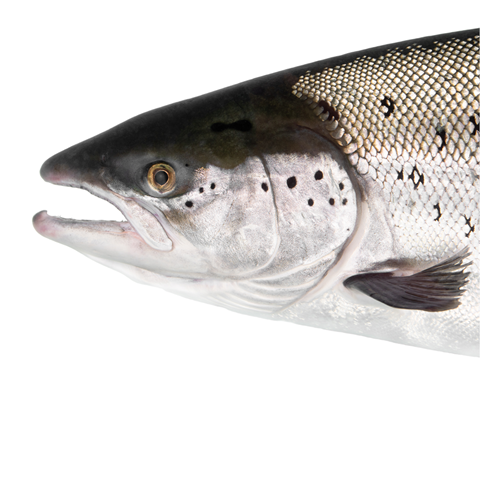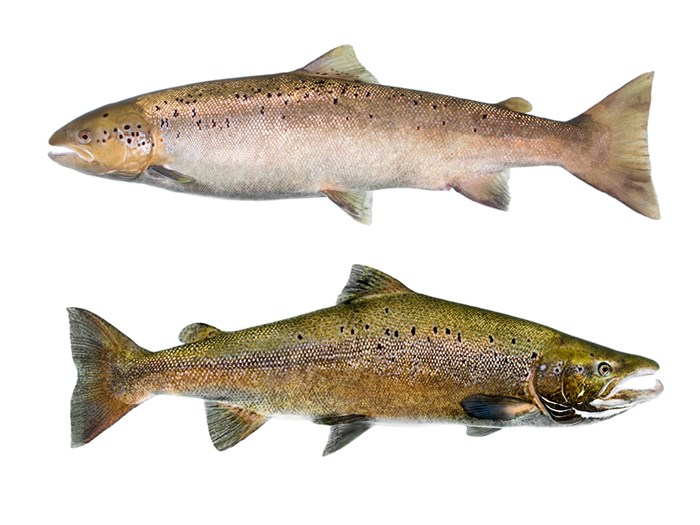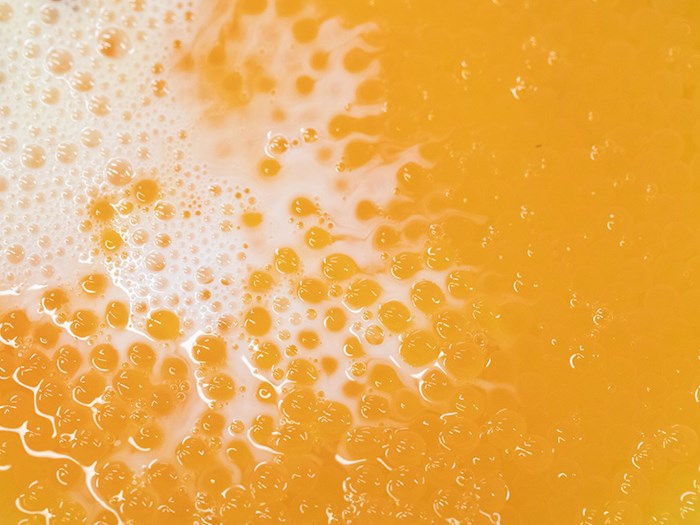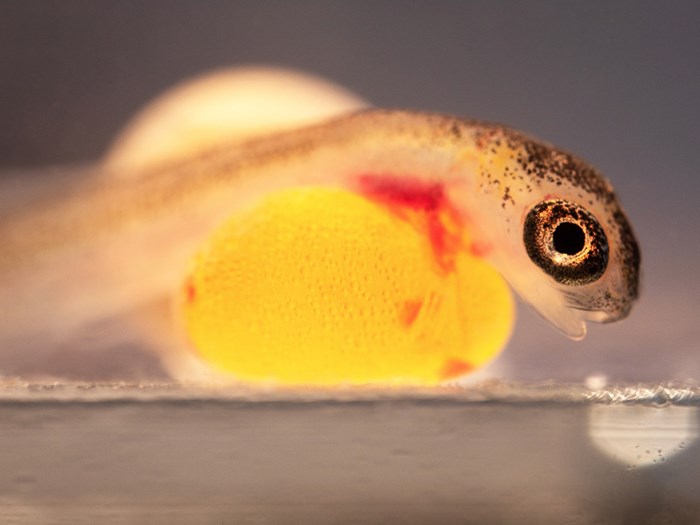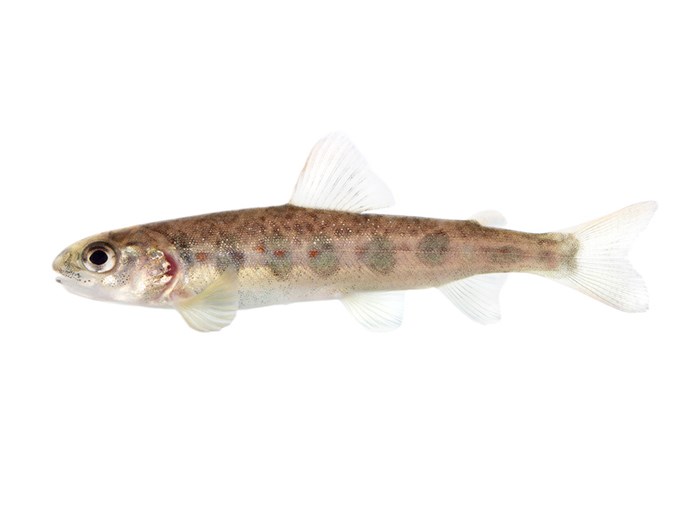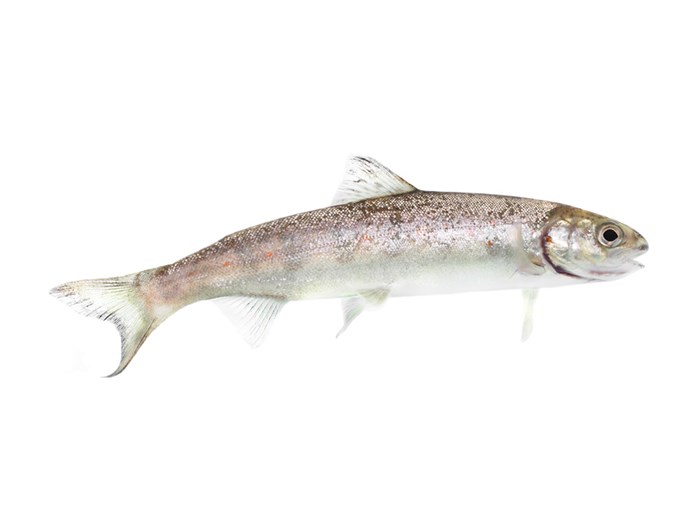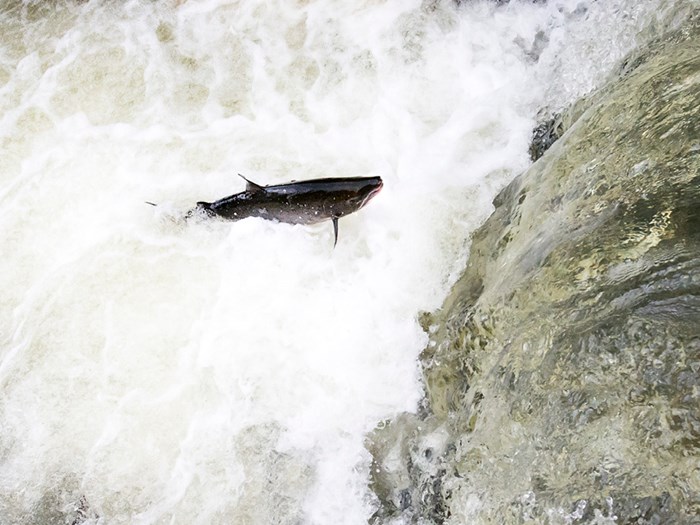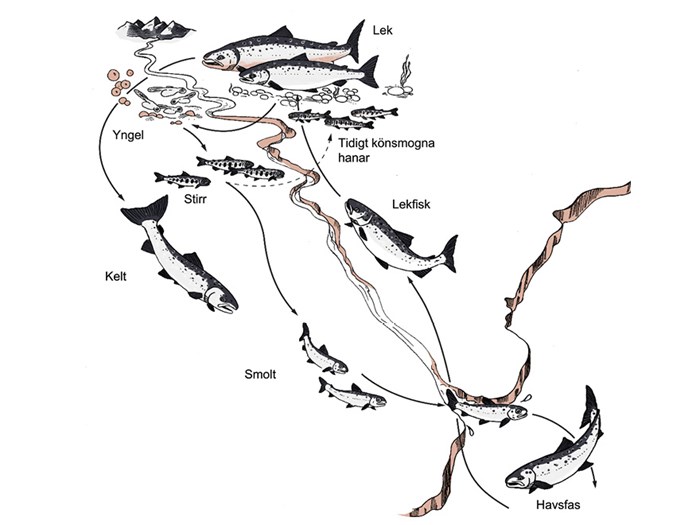The adult Atlantic salmon has grown large at sea, and it returns to the place in the river where it once hatched when it is time to spawn. Atlantic salmon are iteroparous, which means they can spawn several times, but not many individuals manage to become repeat spawners. In Norwegian rivers, only 3.8% of the fish were repeat spawners and the proportion varied between 0 to 26 percent across 179 populations.
"Repeat spawners are important for recruitment to the population, especially in years with low numbers of first-time spawners. They are on average larger than first-time spawners and females contribute with more eggs. They also contribute to genetic diversity since more cohorts spawn together when repeat spawners are present," says Lo Persson, researcher at the Swedish University of Agricultural Sciences (SLU) who was one of the principal investigators in this study.
Small salmon in large-salmon populations of salmon more often become repeat spawners
Fish that return to spawn after only one year at sea, called one-sea-winter fish (1SW), have a higher probability of being a repeat spawner compared to a fish that has spent multiple years at sea, called multi-sea-winter fish (MSW), before first spawning.
"It has been known that small fish, i.e. the ones that return after only one year at sea, invest relatively less energy into spawning compared to large fish. However, we found that small fish in large-salmon populations more often became repeat spawners compared to small fish in small-salmon populations, which could indicate local adaptation."
Fish in large-salmon populations were alternate spawners, they reconditioned for two years between each spawning event, whereas fish in small-salmon populations were consecutive spawners and spawned again the year after the first spawning event.
"People believe that this can be explained by the relatively larger energy investment made by larger fish that then requires additional time to recondition at sea. However, we found a strong correlation between the time to recondition and the population mean sea age, were also small fish in large-salmon populations (high mean sea age) were alternate repeat spawners. The differences between populations indicate local adaption, which means that salmon over time has evolved to be fit in their home river and the marine environment where they feed. Based on our results, we think the repeat spawning trait has been subjected to selective pressures that differ among rivers - giving rise to differences among populations," says Lo Persson.
Females are more often repeat spawners than males
Females were more often repeat spawners than males, the study confirms. That males have lower post-spawning survival than females has been observed previously. Injuries from aggressive interactions at the spawning ground are thought to contribute to lower survival of males.
In this study, the researchers were able to show that males lost more than females in terms of body mass when compared to first-time spawners. This could indicate that the ability to recondition is constrained in males, which could contribute to their lower survival.
"The analysis of lost body mass made me re-think my idea of what a repeat spawner looks like. Before this study, my idea was that they are really large fish but now I have a better understanding of the cost that spawning imposes on the fish."
When the fish matures and return to spawn, not only do they not eat for up to a year, they often invest more than 50% of their energy during the spawning migration and at the spawning grounds. If they would have stayed an additional year at sea they would have roughly doubled their weight.
"Of course some of the largest fish are repeat spawners, for example, we had a 12 year old female in our data that was caught on her fourth return to the river and she weighed 15 kg. However, the majority of repeat spawners are much smaller than that."
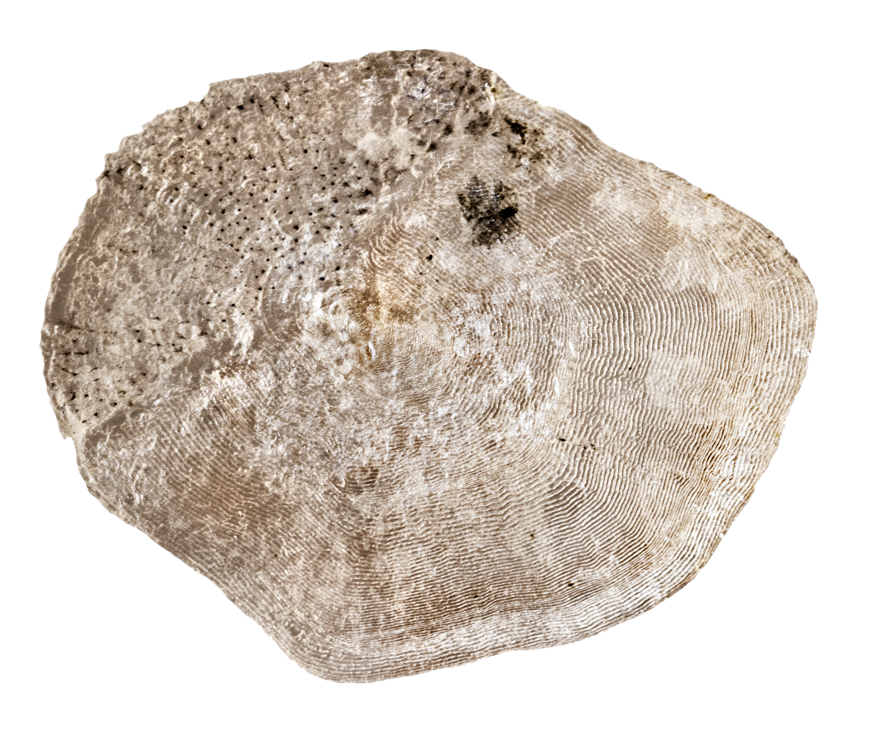 Life history of salmon can be obtained from their scales
Life history of salmon can be obtained from their scales